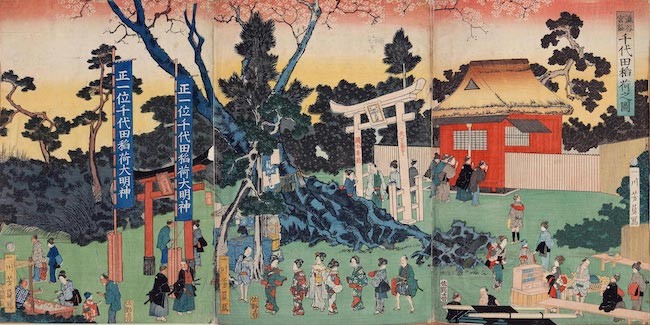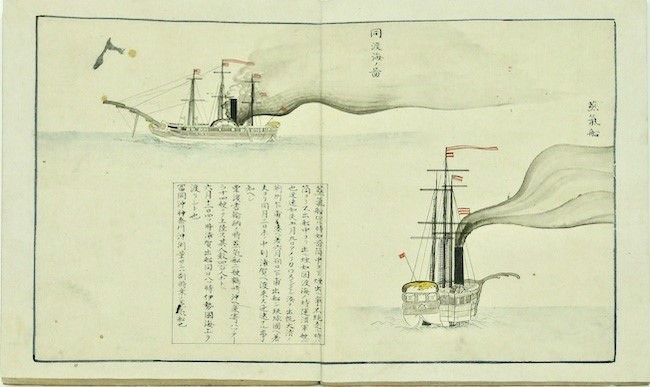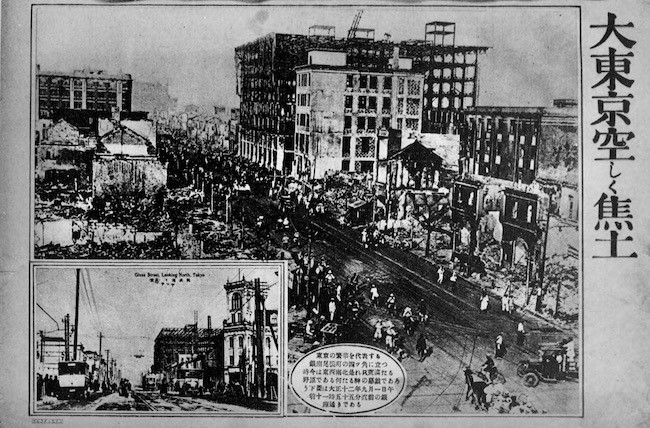History of Tokyo - From Edo to the Present

Tokyo is one of the largest cities in the world with a population of about 14 million people. Tokyo was once called Edo, and in the late 12th century, the Edo clan created the village of Edo (the Edo clan took its name from the area called Edo.). The following is a summary of the history of Tokyo, from a small fishing village to the dramatic changes it underwent to become the Tokyo of today.
Edo Castle and Edo Era
In the latter half of the 12th century, the Edo clan established the village Edo. And after a while, Edo Castle (part of the current Tokyo Imperial Palace) was built by Ota Doshan in 1457, and later became a branch castle of the Hojo clan in 1524, and the Hojo clan was destroyed in 1590 when Toyotomi Hideyoshi conquered Odawara. In 1590, Toyotomi Hideyoshi defeated the Hojo clan in Odawara, and Tokugawa Ieyasu moved the castle to his former domain, the so-called Kanpachi-shu, and made it his residence. In this way, the history of Edo changed dramatically.
When Ieyasu made the castle as his residence, the castle was only temporarily repaired however, it was later expanded and improved during the reigns of Hidetada (the 2nd) and Iemitsu (the 3rd) , and the large castle was completed in 1636 during the reign of Iemitsu. Edo era started in 1603 and lasted until 1868.
Ieyasu Tokugawa and Edo
By this time, Edo, the city Ieyasu had chosen as his home, was even more desolate than it had been since Dokan Ota had built his castle, and the sea was so close to the edge of the castle that it was difficult to secure fresh water, the most essential human resource.
However, Ieyasu came up with a plan. There were several small mountains in Tokyo at that time. He thought it would be easier to expand the land if he could use one of the largest mountains, called Kanda Mountain, to reclaim the sea. By cutting down the mountain and reclaiming the land to the sea, the once bumpy city of Edo was able to secure a space where residences could be built around the Edo Castle.
Furthermore, the problem of not being able to use fresh water was solved when Ieyasu drew water from Inokashira Pond through Kanda Jyosui (river). When Ieyasu opened the shogunate in Edo in 1603, the city's prosperity was assured, and by 1609 it was already a major city with 150,000 inhabitants. What was once a small fishing village had grown to house one million people by 1721.
Edo became the center of Japan, and for over 200 years, Edo enjoyed a period of peace known as the "Tokugawa Era.
Edo Culture
Before the Edo era, the center of culture was Kyoto, Osaka, and other parts of the Kamigata region, but as the Edo period approached its latter stages, a culture centered in Edo began to flourish. For example, the most famous example would be kabuki. Kabuki was first performed in Kyoto in 1603, then started in Edo in 1624.
> Sustainable Lifestyles in Edo and Japanese History
In the Edo era, Ukiyoe prints became popular as well, especially Toshusai Sharaku, Utagawa Hiroshige, and Katsushika Hokusai are particularly famous. Sumo, Rakugo also became popular in Edo era. There are many cultures blossomed in the Edo era, creating a state befitting the center of Japan.

Sumo: Image from Tokyo Metropolitan Library

Rakugo: Image from Tokyo Metropolitan Library

Chiyoda Inari Shrine: Image from Tokyo Metropolitan Library
The above photo is Chiyoda Inari Shrine. When Dokan Ota built Edo Castle in 1457, Fushimi Inari from Kyoto was transferred into the castle. Later, in 1602, when Ieyasu Tokugawa expanded Edo Castle, the shrine moved from the castle to Shibuya Miyamasu-cho.
Japan was not entirely closed to other countries
It is said that Japan was closed to other countries during this period, but it did not close the country completely. It adopted a policy of trade restriction and traded with the Netherlands, China and Korea. Despite its limited diplomacy, Japan received a significant amount of foreign information.
Opening Ports

異国船図 北亜墨利加: Tokyo Metropolitan Library
In 1853, an American warship led by Matthew C. Perry appeared off the coast of Uraga, the entrance to Edo Bay. Perry presented the president's letter of intent to the shogunate and pressed for the opening of the country.
The following year, in 1854, Perry showed up again, and Japan signed the Treaty of Amity between the United States and Japan, opening the ports of Shimoda and Hakodate. The U.S. demanded that the U.S.-Japan Treaty of Amity and Commerce (1858) be signed in order to further promote trade, and in addition to the two ports, five other ports (Yokohama, Nagasaki, Niigata, and Kobe) were opened to free trade.
The shogunate also signed the same treaty with the Netherlands, Russia, England, and France.
The End of Edo Era
Takamori Saigo of the Satsuma Clan and Kogoro Katsura of the Choshu Clan joined forces to form the Satcho Alliance. With the two powerful clans united, the movement to "overthrow the Shogunate" accelerated.
In 1867, the shogun, Yoshinobu Tokugawa, returned power to the imperial court. The shogun is the "Seii Taishogun," a position given to him by the Imperial Court, and with the return of this position, the power to conduct politics was transferred to the Imperial Court.
With the return of power to the imperial court by Yoshinobu Tokugawa, it marked the end of the samurai government that had lasted for about 700 years since the Kamakura period.
Tokyo as New Capital
After the departure of Yoshinobu Tokugawa, the new government forces moved into Edo, and an administrative district called Edo Prefecture was established.
At this time, the idea of relocating the capital from Kyoto to a more suitable area for the creation of a new Japan was also raised, and a location for the relocation of the capital was sought. In the midst of this situation, a proposal to divide the capital functions between Edo and Kyoto, and rename Kyoto as Nishikyo and Edo as Tokyo was submitted.
The proposal was approved, and the capital was moved to Edo on July 17, 1868. The name was also changed from Edo to Tokyo, and the history of Tokyo began.
Meiji Era
This is how Tokyo began its history as the capital of Japan, but as the Meiji era began, Western culture was put to full practical use, and the infrastructure was improved with the opening of the railroad between Shimbashi and Yokohama in 1872, and the number of modern brick buildings increased rapidly.
Below photo shows how it used to be at the Shimbashi Station in 1872.
In 1878, the city of Tokyo was established with a focus on the areas of Tokyo Prefecture that had developed as urban areas, and 15 new wards were created, eventually forming the 23 wards of today's Tokyo.

Nihonbashi Main Street from 1911 東京風景(国立国会図書館)
The Great Kanto Earthquake and the War
Tokyo became the capital of Japan in this way, but in the Taisho and early Showa eras, the city was often severely damaged by wartime disasters and earthquakes, but each time it recovered and eventually grew to become the world's largest city. By the 1920s, Tokyo's population had surpassed 3.7 million.
On September 1, 1923, a massive earthquake struck Tokyo and the rest of the Kanto region. The so-called Great Kanto Earthquake occurred, leaving more than 100,000 people dead or missing, and fires broke out, turning the city into a sea of fire and devastating it. However, Shinpei Goto, who was the mayor of Tokyo at the time, planned a new city and successfully rebuilt it.

Great Kanto Earthquake 関東大震災画報:写真時報(国立国会図書館)
In 1941, the Greater East Asian War broke out, and incendiary bombs began raining down on Tokyo, burned the city of densely built wooden houses to the ground. On March 10, 1945, the city of Tokyo was completely destroyed in an air raid. Tokyo was devastated and 100,000 people died. After the War, the rebuilding of the city began to center on Tokyo, and by 1955, the city of Tokyo was back on its feet.
Post-War Reconstruction to Modern Age

As Japan entered a period of high economic growth, the 1964 Tokyo Olympics, the opening of the Shinkansen bullet train, the construction of expressways, and the expansion of Tokyo's urban areas all contributed to the city's rapid development. In the latter half of the 1980s, the bubble economy caused the price of land in Tokyo to skyrocket, and the collapse of the bubble economy in 1991 caused some negative effects, such as the appearance of vacant lots everywhere.
Until the 1600s, Tokyo (Edo) was a small village. Tokyo was burned out and destroyed by the earthquakes and the War however, every time people have worked on rebuilding Tokyo and it is developing still now. The population of Tokyo has grown to around 14 million in the last 400 years.
Is it True that Tokyo is NOT the Capital of Japan?

In 1950, it was clearly stated in the Capital Construction Law that Tokyo was the national capital however, this was abolished in 1956. In the subsequent Metropolitan Area Development Law, the wide area around Tokyo, including the Tokyo metropolitan area, is defined as the metropolitan area, but the article defining it as the capital has been lost. For this reason, we cannot clearly state that Tokyo is the capital.
Nevertheless, Tokyo is the capital in fact and form, and the official position of the Japanese government is that "Although there is no law directly stipulating that the capital is Tokyo, we believe that it is widely accepted by society as a whole that Tokyo is the capital of Japan".
There are more articles about Tokyo in "Tokyo General Information".

- Rental Apartments & Houses in Tokyo
- Listings of popular and luxurious rental apartments, condominiums, and houses designed with expats in mind.

- Apartments & Houses for Sale in Tokyo
- Listings of apartments, condominiums, and houses available for purchase in Tokyo.


















